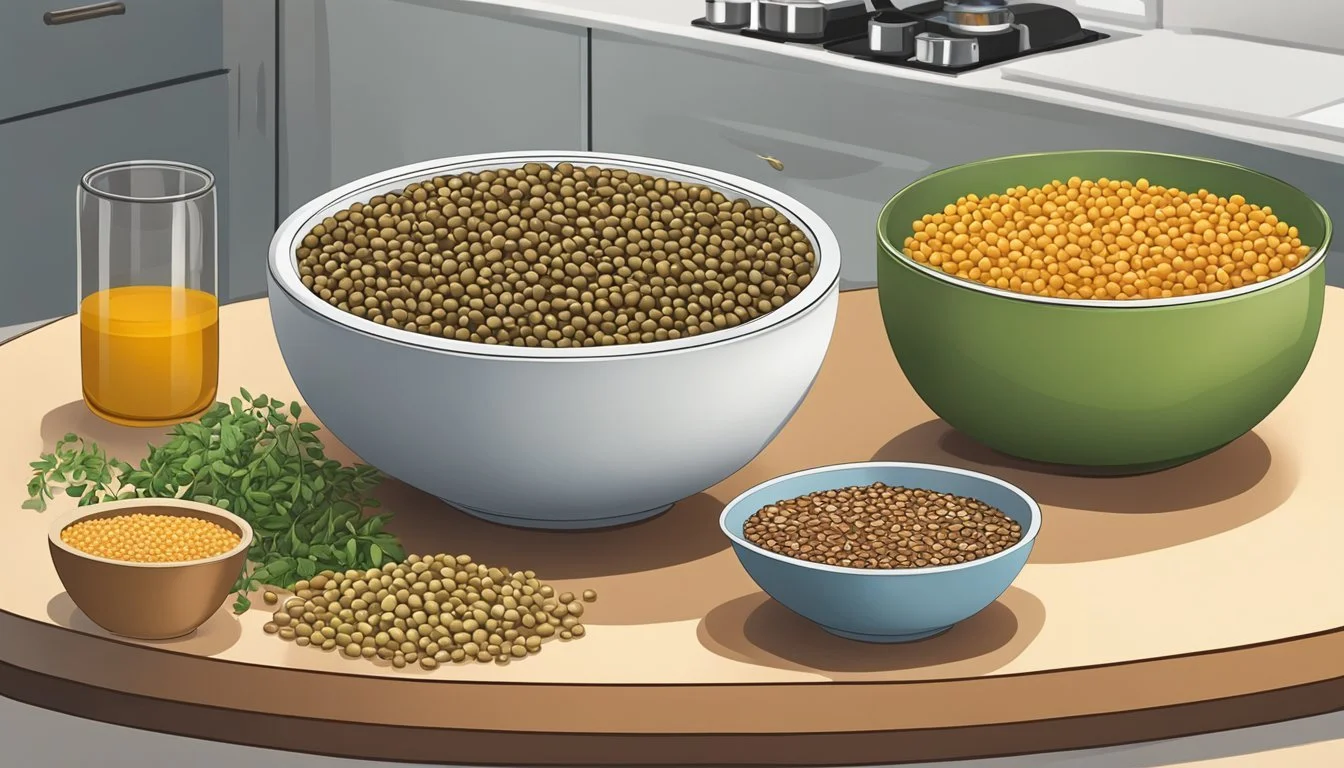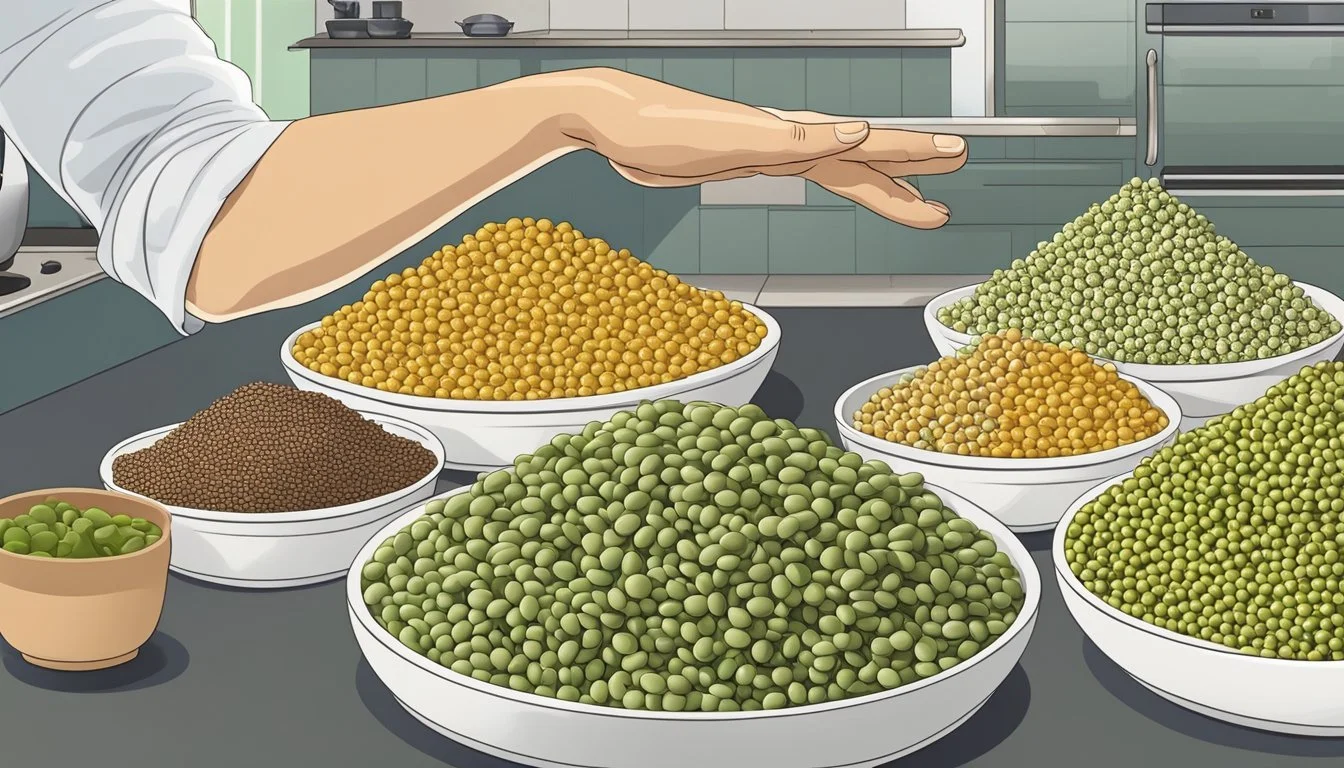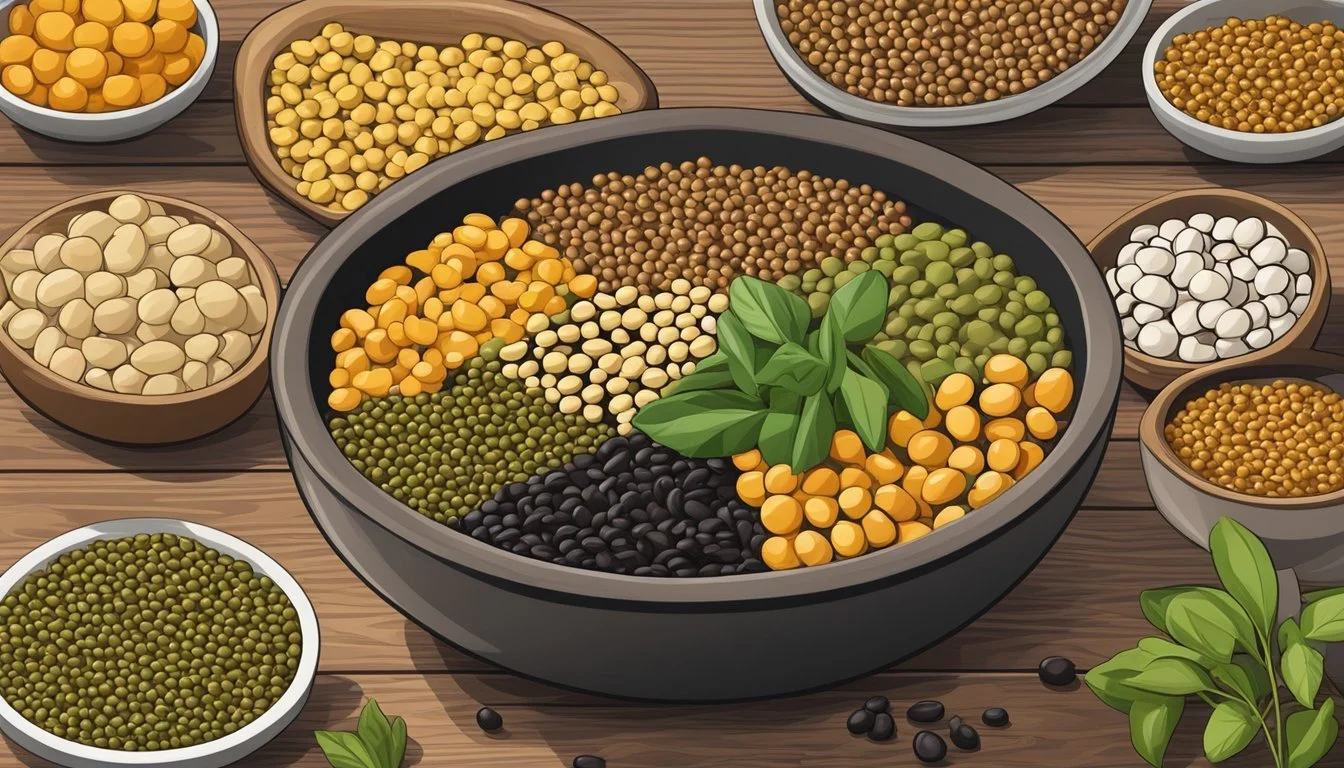Pigeon Peas Substitutes
Top Alternatives for Your Recipes
Finding a suitable substitute for pigeon peas can be essential for creating a delicious dish when this legume isn't available. Whether you're preparing soups, stews, curries, or salads, a wide range of alternatives can mimic the flavor and texture of pigeon peas. Black beans, chickpeas, and green peas are some of the best substitutes for pigeon peas, offering similar nutritional benefits and culinary versatility.
Legumes like red lentils, lima beans, and mung beans can also serve as excellent replacements. Each of these options has its unique flavor and texture, making them valuable additions to various recipes. Yellow-eyed peas and adzuki beans can complement your dishes with their distinct characteristics, seamlessly taking the place of pigeon peas.
Exploring these substitutions not only broadens your culinary repertoire but also ensures you always have a reliable alternative when pigeon peas are out of reach. The versatility and availability of these legumes make them a practical choice for any kitchen.
Understanding Pigeon Peas
Pigeon peas, scientifically known as Cajanus Cajan, are legumes prized for their resilient nature and versatility in various cuisines. They are rich in protein, fiber, and essential vitamins and minerals, making them a nutritious ingredient in many dishes.
Origins and Cultivation
Pigeon peas originate from India but are also widely cultivated in the Caribbean, South America, and other tropical regions. They have a history of over 3,500 years, during which they have adapted to various climates. These peas thrive in warm weather and are often grown in regions with substantial rainfall.
Due to their drought-resistant nature, pigeon peas are a staple in many low-rainfall areas. The plant is a hardy perennial, producing pods that contain seeds, which are the edible part.
Nutritional Profile
Pigeon peas are a powerhouse of nutrients, offering a significant source of protein, which is beneficial for vegetarians. A 100-gram serving provides approximately 114 calories, 7 grams of protein, and 6 grams of dietary fiber.
They are also rich in vitamins and minerals, including iron, magnesium, folate, phosphorus, and potassium. These nutrients contribute to various health benefits, such as improved digestion, increased energy levels, and better bone health.
Culinary Uses
Pigeon peas are a versatile ingredient used in numerous culinary traditions. In India, they are often used in dal, a lentil-based dish. They are also integral to many Caribbean and Latin American dishes, such as stews and curries.
In addition to these, they can be incorporated into soups and salads, adding both flavor and nutritional value. Pigeon peas are popular in Middle Eastern dishes as well, where their earthy flavor enhances many traditional recipes.
Taste and Texture
Pigeon peas have a distinctive taste and texture that sets them apart from other legumes. They possess a nutty and earthy flavor, which adds depth to various dishes. The texture of pigeon peas is meaty yet tender when cooked, making them a satisfying addition to meals.
These characteristics make pigeon peas an excellent choice for both savory dishes and recipes that require a robust flavor profile. Their unique taste enhances the overall experience of the dish, making them a versatile and cherished ingredient in many culinary traditions.
Common Pigeon Pea Substitutes
Pigeon peas are a staple in many cuisines. However, several substitutes can match both their flavor and texture across various dishes, from stews and curries to salads and stir-fries. These alternatives vary from well-known legumes to specialty beans that may surprise you.
Legume Alternatives
Red Lentils
Red lentils are an excellent pigeon pea substitute. They cook quickly and break down easily, making them ideal for soups and stews. Their subtle flavor harmonizes well with spices in curries and other dishes.
Black Beans
Black beans, also known as black turtle beans, offer a slightly sweet taste and firm texture. They are versatile and can be used in tacos, salads, and even as a side dish.
Chickpeas
Chickpeas, also called garbanzo beans, are another superb substitute. They have a nutty flavor and firm texture, making them perfect for hummus, curries, and roasted dishes.
Green Lentils
Green lentils hold their shape well, making them suitable for salads and stews. They provide a slightly peppery taste that pairs well with a variety of seasonings.
Substitutes for Specific Dishes
Navy Beans
Navy beans can be substituted at a 1:1 ratio for pigeon peas in dishes like soups and casseroles. They have a creamy texture and mild flavor, ideal for Boston beans and baked beans.
Kidney Beans
Kidney beans work well in hearty stews and curries. Their robust texture and slightly sweet flavor make them a good match for rich, spiced dishes.
Lima Beans
Lima beans, also known as butter beans, offer a slightly buttery taste. They are suitable for side dishes, as well as in stews and soups.
Edamame
Edamame beans, or young soybeans, provide a firmer texture and nutty flavor. They are excellent in stir-fries and as a steamed or fried side dish.
Specialty Substitutes
Fava Beans
Fava beans have a unique, slightly bitter taste and smooth texture. They work well in Mediterranean dishes, particularly in salads and bean dips.
Cannellini Beans
Cannellini beans, also known as white kidney beans, are versatile and have a mild, nutty flavor. They are ideal for soups, salads, and Italian dishes.
Black-Eyed Peas
Black-eyed peas have a distinctive flavor and mealy texture. They are great in Southern-style dishes, stews, and salads.
Each substitute offers unique characteristics, enabling you to tailor your choice to the specific dish you are preparing.
Selecting the Right Substitute
Choosing the perfect substitute for pigeon peas involves evaluating several factors, including flavor profile, texture, cooking considerations, and nutritional content. Each aspect will influence how the substitute performs in various recipes and its overall impact on the final dish.
Flavor Considerations
The flavor profile is crucial when selecting a substitute for pigeon peas. Pigeon peas offer an earthy flavor with nutty undertones that blend well in many dishes. Some viable alternatives include:
Green Peas: These have a sweet flavor, suitable for dishes that benefit from a lighter taste.
Black Beans: Known for their rich, earthy flavor, they provide a good balance in savory dishes.
Chickpeas: With a slightly nutty and creamy taste, chickpeas work well in salads and soups.
Different beans and legumes will add varying levels of sweetness, nuttiness, or earthiness, so it’s essential to choose based on the desired flavor outcome of the dish.
Texture and Cooking Considerations
When considering texture and cooking times, you must align the substitute with the dish's requirements. Pigeon peas have a meaty texture that stands up well in stews and curries.
Lentils: Particularly red or green lentils, cook quickly (15-20 minutes) and offer a soft texture.
Kidney Beans: These require a longer cook time (45-60 minutes) but have a creamy texture similar to pigeon peas.
Navy Beans: These have a crunchier texture, suitable for rice dishes and salads.
Understanding cooking and prep times is essential to ensure your substitute integrates seamlessly with other ingredients.
Nutritional Comparisons
Nutritionally, pigeon peas are rich in protein, fiber, vitamins, and minerals such as iron and magnesium. Evaluate the nutritional profile of substitutes to match your dietary needs:
Chickpeas: High in protein and fiber, they also offer vitamins and antioxidants.
Black Beans: Provide a good amount of protein and are rich in iron and magnesium.
Lima Beans: These are a good source of dietary fiber and vitamin B.
Considering nutritional values ensures the chosen substitute supports health benefits akin to pigeon peas. Comparing protein, fiber, and essential vitamins and minerals helps make a well-informed choice.
Preparing Substitutes
When substituting pigeon peas, various methods can be used to maintain the desired texture and flavor. Whether simmering, steaming, or sautéing, these techniques help make the most of alternatives like green peas, chickpeas, and kidney beans.
Cooking Methods
Green peas are versatile and can be steamed or boiled. Steaming preserves their bright color and firm texture, making them a great addition to salads. Boiling is faster and suitable for curries and stews.
Kidney beans require soaking and simmering to achieve a creamy texture. This process is crucial for dishes needing longer cook times, such as stews.
Chickpeas can be boiled or sautéed. Boiled chickpeas retain their shape in salads or stews. Sautéing chickpeas enhances their nutty flavor, making them ideal for curries.
Adjusting Recipes
When replacing pigeon peas, adjusting the cook time and liquid quantities ensures the right texture and flavor. Simple substitutions like swapping pigeon peas with green peas in salads may require minimal changes.
For curries and stews, substituting pigeon peas with kidney beans or chickpeas may require longer simmering times. Chickpeas, being firmer, might also need more liquid during cooking.
The use of different beans might also mean adjusting seasoning. For instance, kidney beans' mild flavor may need more spices to match the richness of pigeon peas. Texture is another consideration; chickpeas provide a crunchier bite compared to the softer pigeon peas.
Using these tips can help create a balanced dish with the intended taste and texture, regardless of the substitute used.
Forms of Pigeon Peas and Their Substitutes
Pigeon peas come in various forms, each with distinct characteristics and substitutes. These forms include fresh, dried, and canned varieties as well as split varieties, commonly known as Toor Dal or Arhar Dal.
Fresh, Dried, and Canned
Fresh pigeon peas are tender and have a slightly sweet, nutty flavor. They can be replaced with green peas or edamame beans for a similar taste and texture. Dried pigeon peas, popular for their long shelf life, can be soaked and cooked similarly to lentils. Substitutes include chickpeas and black beans for their comparable texture and nutritional value.
For frozen pigeon peas, green peas again serve as a convenient alternative. Canned green pigeon peas are also available and can be swapped with canned green peas, which are readily accessible and offer a similar consistency. These substitutes ensure that recipes maintain their intended flavor and nutritional benefits.
Split Varieties
Split pigeon peas, or Toor Dal/Arhar Dal, are a staple in many cuisines due to their quick cooking time and smooth texture. They can be substituted with yellow split peas, which possess a similar consistency and cooking requirements. Additionally, split peas in general come close in texture and taste, making them an excellent substitute for dishes emphasizing creamy lentils.
This choice is particularly useful when looking to replicate the slightly earthy flavor of split pigeon peas without compromising on quality or nutrition. Cook times and preparation methods for these substitutes closely mirror those of traditional split pigeon peas, ensuring convenience for the cook.
Conclusion
When seeking substitutes for pigeon peas, there are many excellent options available. Popular alternatives include chickpeas, black beans, lima beans, and green lentils, each bringing unique flavors and textures to various dishes.
Nutritional profiles of these substitutes often mirror those of pigeon peas, making them suitable for vegetarian diets. Foods like split peas and black-eyed peas are high in dietary fiber, which supports digestive health.
Utilizing substitutes can ensure that recipes retain their integrity while accommodating ingredient availability. Options like cannellini beans and butter beans provide versatility for soups, salads, and curries.
Choosing the right substitute can enhance culinary experiences without compromising flavor or nutrition. Each alternative offers a distinct yet complementary taste, ensuring successful dish preparation.





